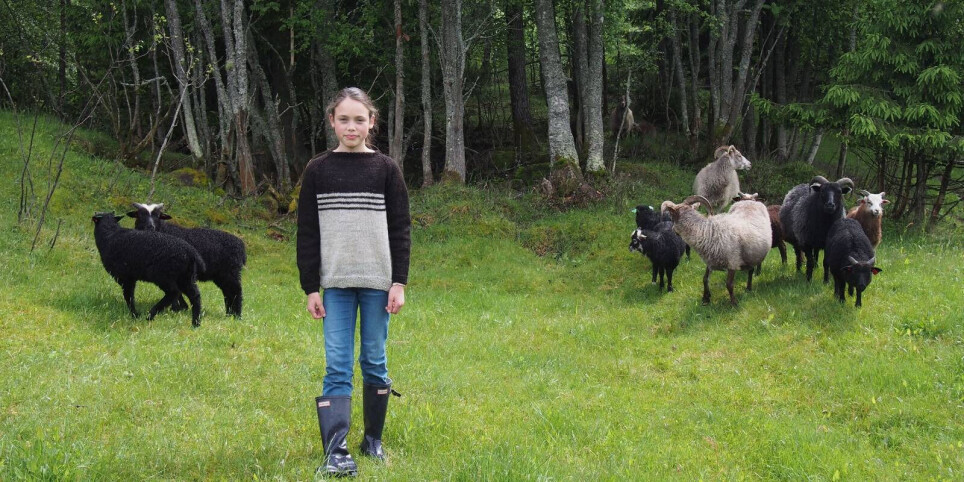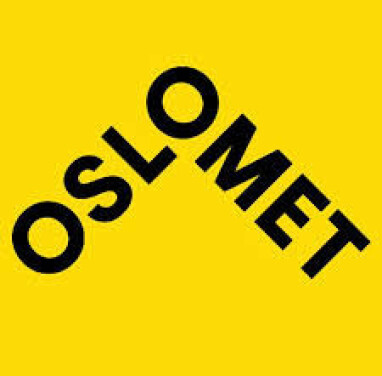THIS ARTICLE/PRESS RELEASE IS PAID FOR AND PRESENTED BY Oslo Metropolitan University - read more

How can we go from fast to slow fashion?
The solution is right in front of our noses, says professor in clothing and sustainability.
Most people have noticed the enormous global consequences of our clothing consumption. Fast fashion is produced at a neck-breaking pace and pumped into stores globally.
New collections are available with only a few clicks through online stores. And in the end, huge amounts of clothes end up as unwanted waste. What is the way out of this mess?
“We must go from fast to slow fashion. And we must go from global to local production," Ingun Grimstad Klepp at Consumption Research Norway (SIFO) says.
She is Norway's only professor of clothing and sustainability, and an internationally recognised researcher on the consumption of clothing.
In a new book, Klepp and a network of clothing researchers explore good alternatives to the current production system for clothing.
Welcome to the future of slow and locally produced clothes.
Slower speed throughout the value chain
Slow fashion means slowing down the entire value chain. The clothes must be produced more slowly starting from the outset. This means more craftsmanship, more time to try on models, improve design, and check the product's quality, and less mass production.
There can’t be new collections in the stores every single week, and the same items will be in stores for a longer period. The result is a slower form of consumption where we don’t replace our things as quickly as we have become used to.
“We have to slow down and use things more and for longer, so that we have time to get to know them and love them,” Klepp says.
Think of your grandfather's suit and mother's national costume (bunad) and hand-knitted sweater, which are often the oldest garments we own. Clothes that have good memories attached and would never throw in the trash.
Home production and 3D printing
The knitted sweater and bunad are examples of garments that are often locally produced, specifically in Norway. They are produced where they will be used, by people who know the culture they are a part of. The clothes are adapted to the wearer's climate, nature, and body.
The sweater may be home-made, while the bunad is often made to order, which means the garment is made and adapted to the customer. This is a way of producing that is growing, due to new technology, such as knitting machines. This is a form of 3D printing, although knitting machines are in themselves an ancient technology.
“The more local production, the better the opportunity to develop production further,” says Klepp.
The opportunities and technology for more local production exist, but what about the raw materials?

Utilise local resources
The hunt for raw materials takes us into the field and out into nature. Norwegian consumers demand Norwegian food as there is great interest in local food and local resources. Can we see this with clothes as well?
The most important Norwegian fibre resource for clothing is naturally wool. We have a full value chain for wool, from sheep to pasture, via spinning mills and weaving mills and knitting factories and out to customers, such as clothes or yarn.
And the potential is there for even better utilisation of wool. There are also opportunities for other underutilised textile raw materials, such as leather and fur, fish skin, nettle, linen, and viscose from wood.
“Local resources are lost if there is no local production. We must increase the use of local raw materials and make the production better adapted to the users,” Klepp says.
Slow and local clothing is an alternative to the textile industry's current environmental measures, which, for example, are mainly about recycling fibre.
The solution is not to recycle rubbish, but to stop making rubbish.
“There are many discussions about clothes and the environment. Most go in circles, and do not help. The only system that actually reduces the environmental impact is the local one. Prices must go up and quantities down. It will result in less waste and better resource utilisation,” she says.
Be self-sufficient with clothes
A systemic change is therefore needed. But how to get people involved? Is it even realistic for everyone to start knitting or sewing their own clothes?
There is a lot going on both in Norway and globally, says Klepp. Among other things, a movement called Fibershed, which started in California. The goal is for each ‘fibershed’ to become self-sufficient in fibres and dyes for clothing.
Available fibres there include wool, cotton, and the important local indigo dye, and there is a potential for those who want clothes only from California, to access these.
“It does not have to be the case that all people make their own clothes. But if we are able to increase the degree of local production a little bit, it can make a big difference,” says Klepp.
There is currently a lot of on-going research. Is this possible and even desirable to achieve? How much land area do we need? What kind of clothes should we make, and how long should we wear these clothes?
Grassroots movement towards the clothing industry
“We have a market in Norway for locally produced clothes already, something that is unusual other places. In addition, local production is a well-proven system with a long history," Klepp says. "Many now say no to the global clothing industry and would rather make slow and lasting fashion at home. It is a grassroots movement.”
“There is a great deal of frustration around the global clothing industry and too few alternatives. Local and slow clothing is therefore a realistic alternative that exists. This is finally something that works! It's just getting started. The winds of change are blowing in the right direction, the markets are growing, and many other countries want to learn from the Norwegian example. That is why an internationally renowned publisher has asked us to write this book,” Klepp concludes.
Reference:
I.G. Klepp and T.S. Tobiasson (eds): Local, Slow and Sustainable Fashion. Wool as a Fabric for Change, Palgrave Macmillan, 2022. Summary.

This article/press release is paid for and presented by OsloMet
This content is created by Oslo Metropolitan University's communication staff, who use this platform to communicate science and share results from research with the public. Oslo Metropolitan University is one of more than 80 owners of ScienceNorway.no. Read more here.
See more content from OsloMet:
-
Researcher: Local government was key to managing the pandemic
-
"Norwegians practice a friendship version of a ‘one-night stand'"
-
"We need to talk about how we assess teacher students"
-
Cannabis use in Norway has increased: “Not everyone needs moral lectures or worried looks"
-
Many children with ADHD do not thrive at school
-
An out-of-control race: Why we fear artificial intelligence




































